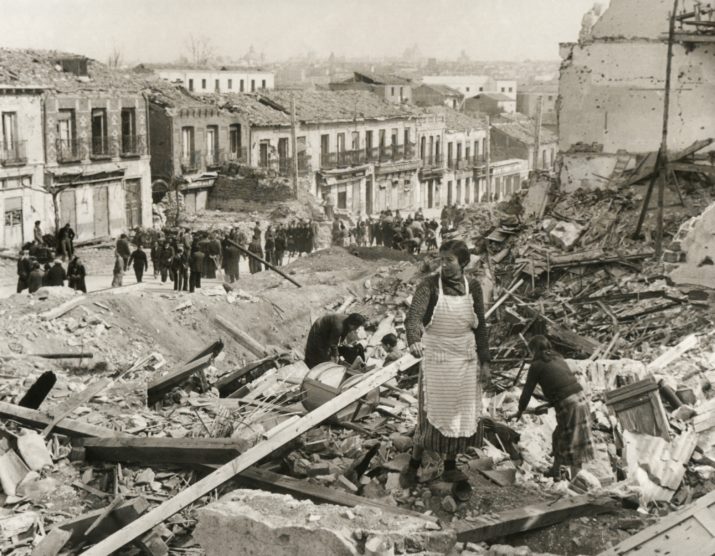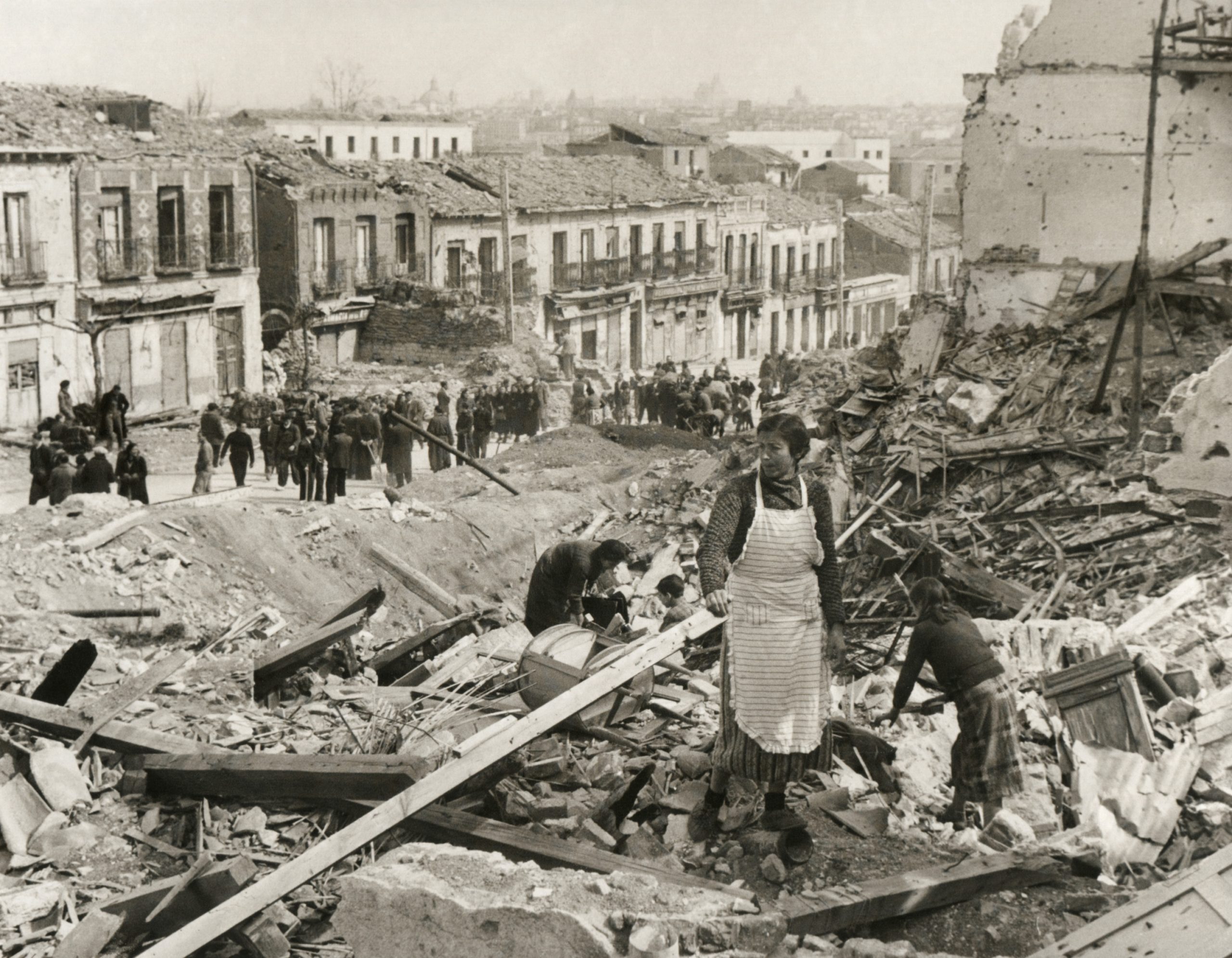

This is part of our special feature, Networks of Solidarity During Crises.
The Task of a Revolution
When does a revolution triumph? Can we say that a revolution is victorious when strategic military objectives have been secured? Or is it when the newly assembled revolutionary government establishes the institutions that will build their collective vision of the future? In the former case, the triumph might prove fleeting—as was the case for the Paris Commune of 1871—while in the latter the vision might fade into the background of foundational texts whose lofty aspirations remain unfulfilled—as in the Mexican post-revolutionary regime of the Institutional Revolutionary Party. Perhaps the measure of a revolution’s success lies not in specific moments, but in its continuity; to ensure that a revolution be victorious, every day must be won. The revolutionary subject, therefore, is not only the one tasked with winning the battlefield or organizing the institutional body of a revolution—the revolutionary subject is also the one who helps foster its daily reproduction.
I will explore the internationalist achievements of the Mexican Revolution, whose reach extended to support the Republican struggle against fascism during the Spanish Civil War (1936-39). To be sure, the Mexican and the Spanish revolutions had aligned, yet different, political horizons, but under the international expansion of fascism, a threat to one was a threat to all emancipatory movements, and the defense of their common vision for the future depended on their standing in solidarity. Specifically, I propose that the military help offered by the Mexican government of Lázaro Cárdenas (1934-1940) to the Republican Popular Front, as well as the political asylum it offered the persecuted Republicans after their defeat, were expressions of internationalism and anti-fascist solidarity, which also represented a continuation of the revolutionary processes of both Spain and Mexico. Further, I want to define these actions as revolutionary reproductive work, for they ensured the well-being of the Spanish contingent and fostered the continuation of the interrupted Republican struggle.
Two revolutions, one history
Both the Mexican Revolution and the Second Republic of Spain strived for the emancipation of the workers and peasants, and for the transformation of the general conditions of life in Mexico and Spain. It was this shared vision that put both revolutions on the same side of the fight against fascism. History has largely overlooked the parallel character of these two movements and the fact that Mexico took in thousands of persecuted Republicans, for we are not used to historical narratives where a former colony, and the younger of the two nations, intervenes—when many other western nations refused—in the aid of a European power. Indeed, there is still much to be written about successful internationalist revolutionary efforts carried out by non-western nations.
The first two decades of the Mexican revolution were marked by gigantic accomplishments and incessant conflict, and the post-revolutionary regime did not achieve a real political stability until the late 1930s when, according to Adolfo Gilly and other historians, president Lázaro Cárdenas ended the cycle of violence by delivering long-postponed promises like the redistribution of the land, the expropriation of oil, and by enacting the Revolution’s principles of international solidarity, when:
Mexico supported Sandino’s national war in Nicaragua, Ramón Grau San Martín and Antonio Guiteras’ nationalist government in Cuba, Marmaduke Grove’s ephemeral socialist republic in Chile, Víctor Manuel Haya de la Torre’s APRA in Peru, and during which exiles and revolutionaries from the Caribbean and Latin America came and went through Mexican territory (Gilly 2001, 307).
Aside from its massive land-distribution program, and the break with the oligarchs and other long-standing power-holding institutions like the church and the military, the Cárdenas presidency offered the worker and the peasant an emancipatory horizon of self-determination and access to power, and extended this vision beyond its national borders. In the passage above, Gilly captures the moment of effervescent solidarity established by the Cardenista government in support of revolutionary movements in Latin America, which the administration considered cut from the same emancipatory cloth as its national program. Francisco Múgica, a revolutionary general who met and mentored Cárdenas around 1915, is a key figure to understand Cárdenas’ political program in general, and his support to Spanish cause specifically; Gilly lists “land, education, national sovereignty, the organization of workers, Spain, and Latin America” among the themes that dominated the communications between the two generals for decades (Gilly 2007, 360).
In fact, some of the areas privileged by Cardenismo that proved relevant to the acts of solidarity between the Mexican Revolution and the Spanish Republic can be traced back to the interests he shared with Múgica, such as a robust public education program, and the organization of workers and peasants The worker’s struggle over the property of the land and the strengthening of unions were basic goals for both revolutionary governments, knowing that the health and dignity of the people depends on their work conditions. But it was education—reproductive work par excellence—with its power to shape the minds of the new generations that was tasked with carrying the revolution to its future, which made it a focal point of interest for Cárdenas and the Republicans long before and after the arrival of the latter by the thousands to Mexican land.
On April 19, 1931, in reaction to the news of the electoral triumph and the proclamation of the Second Spanish Republic five days prior, which announced the end of the centuries-old monarchy that had ravaged the American continent, Múgica wrote the following telegraph to the leader of the National Revolutionary Party in Mexico City:
You that have an esteemed voice and a privileged position, speak clearly and with admonition to the Spanish republicans so that the Peninsula listens and the echo reaches Paris and Rome, telling them that: FIRST. In order to end the monarchy, the Clergy and State Religion must be annihilated. SECOND. In order to consolidate the Republic, they must abolish Spanish Greatness. THIRD. If they do not decree the expropriation of Spanish land that for centuries workers have paid for and award it to the farmers, the Revolution will hold no incentive for the people. If these points are not part of a program of innovation, we will have reason to continue believing that Spain lives its hour of uncertainty just as her sister republics to the south (Gilly 2001, 304).
The similarities between the Mexican and Spanish causes were not lost on Múgica, who offered to share the lessons learned from the first twenty years of the Mexican revolutionary process: neutralize reactionary institutions, expropriate the land amassed by the landowning class and redistribute it among its workers, and finally, establish an international network of political solidarity. Múgica was fully aware that land distribution was the only way to ensure that the people would be fully behind the Republic. He knew that realizing this revolutionary pledge was necessary not only in Spain, but in Mexico as well, where although it had been inscribed in article 27 of the 1917 Constitution, by 1931 it was still a mostly unfulfilled promise. As stated above, it was only three years later, under Cárdenas, Múgica’s mentee, that this central claim of the agrarian revolution was finally realized.
In Spain, the Law for Agrarian Reform was proclaimed in 1932—the early days of the Second Republic—making it even clearer that there were important continuities between both countries’ revolutionary processes. As in Mexico, however, this statement of political will was interrupted after its proclamation by the beginning of the Civil War. Regardless, the importance of the rural masses for the Republican project, and later for its defense during the Civil War, is further evidenced in the proportion of land laborers among the persecuted Republicans that fled to Mexico. This important fact that speaks to the political proximity of the actors of the Spanish and Mexican projects has been largely obscured in the common narrative about the Republican exile in Mexico, which describes it mostly as being composed of intellectuals and artists (Pando Navarro 2008, 189).
But it was the fourth point in Múgica’s telegram that proved central to the intertwining of the stories of these two countries: he knew a revolutionary process would never be complete unless it included an element of international solidarity and political coordination.
Revolutionary reproductive work
The opportunity for the Mexican revolutionary government to uphold its commitment to internationalism came on July 17, 1936, when the Spanish Republic was attacked by the reactionary General Francisco Franco, which was swiftly backed by the fascist governments of Adolf Hitler and Benito Mussolini. Even though Franco’s Nationalist front was aided by the considerable military might of Germany and Italy, the rest of the European countries signed a treaty of non-intervention proposed by England and France in 1936 and cosigned by twenty-seven other nations, which effectively reduced Spain to a state of economic and military isolation. The significant exception to the international position of non-intervention was Mexico. President Lázaro Cárdenas mounted an economic and military aid program to support the efforts of the Popular Front between 1936 and 1939, but more importantly he put in place a diplomatic program to protect the Republicans once the fascists prevailed (Lida 1997, 83). Cárdenas knew that Fascism threatens all emancipatory efforts in any context where it irrupts; and just as fascists banded together in Spain to impose their worldview, so did antifascist revolutionaries come together to defend the future of their common vision of a more just world.
A good example of the aid that the Mexican revolutionary government extended to Spain can be seen in the preparation and deployment of six ocean liners, between 1939 and 1942, directly funded by the Mexican government through its diplomatic representative in France, former revolutionary Gilberto Bosques—the Sinaia, Ipanema, Mexique, Flandra, Nyassa, and the Serpa Pinto II—which transported thousands of refugees from France to Mexico. The story of this group of refugees begins with their escape from Spain to France on foot, and ends several months later with a warm reception from a crowd of workers in the port of Veracruz, where they were awarded legal status, given medical attention, and assigned a destination in the country according to their profession or occupation. The process, however, was incredibly harrowing and required clarity of purpose, flexibility, and no small degree of cunning just to overcome the many hurdles that they confronted at every step of the way. When the military defeat of the Popular Front started to seem the likely outcome of the war, Bosques’ delegation began making arrangements for the transport and asylum of the Republicans, which took some time and plenty of resources. In an interview from 1994, Bosques remembers that the Mexican diplomatic corps offered the Republicans refuge starting in November, 1940 “in the suburbs of Marseille, [where] we established shelters: one in the castle in La Reynarde for a large number of men, and then another one in the castle of Montgrand for the women and children. In order to establish these refuges or shelters, we had to go case by case” (Liberman and Bosques 2015, 88).
The fact that the fate of every family was fought for individually would be arduous enough to prove Bosques’ commitment to this mission, but the full process was even more astounding. Since the normal communication lines with the Mexican government were disrupted because of the German occupation, the consul general had to make executive decisions to accomplish tasks big and small without the direct help of the Mexican State. The efforts of the Mexican delegation went far beyond tending to the most basic needs of the refugees:
The activity also included setting up some workshops like one for training nurses, and even one for artistic production. There were workshops for molding, smithing, and forging. They were set up […] because they were necessary for the reconstruction of the castle of La Reynarde, which was in very poor conditions. […] With the materials for carpentry and masonry, with the tools that came out of those workshops we restored a large cellar that later became a theater, and reconstructed a house that was completely in ruins; some time later, we held an exhibition of artworks produced in the castle in that house. (Liberman and Bosques 2015, 88-89)
The castles of La Reynarde and Montgrand became laboratories of revolutionary care-work, where the antifascist struggle took the form of self-sustenance, as the refugees worked the fields around them to produce the food they needed; of reproductive work, as childcare was socialized and shared; and of political education, as workshops and classes about Mexico’s history, politics, and geography were offered in preparation for their arrival. Feeding the bodies was as important as healing the minds of this contingent that had been traumatized by the war and concentration camps, as Bosques made clear referring to the program of recreational activities, parties, and games, aimed specifically at restoring the spirits of the Republicans. These efforts set a precedent for the politics of solidarity that helped establish Mexico’s reputation as a revolutionary nation that stood with the defenders of just causes, especially in their darkest hour.
Having been directly responsible for the well-being and final delivery to safety of thousands of families, the figure of Gilberto Bosques has achieved a somewhat mythical quality, and, along with President Cárdenas, has been the object of a number of hagiographic books and films. The present text, however, hopes to reveal that far from being the sole action of two individuals, the labor involved in this diplomatic mission was mainly the congruent extension of the principles of the Mexican Revolution. Bosques himself spoke about the importance that acting in accordance with the principles of his government had had for the success of his diplomatic mission, asserting that President Cárdenas’ attitude was “always clear, and he was never opposed to our efforts, based on principles, because in reality, our position, our revolutionary ideal, has been antifeudal, anticolonial, antiracist, within a revolutionary stance” (Liberman and Bosques 2015, 95).
Care and reproductive work were also central during the time the Republicans spent on the ships that took them to Veracruz, where the coordination of the Mexican officials met the self-organizing skills of the refugees in a robust program of lectures imparted by some of the teachers and professors on board, profession-specific workshops in preparation for finding work in the host country, and daily games for the children and dances for the adults in the evenings. These activities were often recorded in publications produced by the passengers themselves, as in the case of Sinaia, which was printed daily during the eighteen days it took its namesake ocean liner to cross the Atlantic (Sánchez Vázquez 1989).
In the pages of Sinaia we find, once more, evidence of the political alignment between the Spanish and Mexican revolutionary projects in terms of reproductive work, not only in its daily calls for the Spanish to work along the Mexican workers for the betterment of their collective lives, but in the choice of the editors to focus on issues common to both the Republicans and the Cárdenas revolutionary government, such as the Popular School program, which recognized that the longevity of the Mexican Revolution could only be won if secular, free, and universally available education was made a priority. A long editorial note in the last issue of Sinaia praises the emancipatory spirit of Mexico’s national education program, exhorting the fellow travelers to lend their help to this project:
Such is […] the education project to which […] we must lend our efforts. In incorporating ourselves to the active work in Mexico, we must not forget that our own antifascist condition, in loyalty to the people of Mexico and their President Cárdenas, who have taken us in with such generous hospitality, in our patriotic duty to reconquer Spain, we must become active combatants in this magnificent effort in which our brothers find themselves in and whose triumph depends on our own victory. (Sánchez Vázquez 1989)
One of the most significant achievements of the years of the Republic was intimately tied to a popular education program as well: the Educational Missions were literacy brigades that took teachers, artists, and intellectuals from the cities to the countryside to serve a largely illiterate peasant population, making this their first significant interaction with the republican project, and convincing them that education was the only path towards a more just world. These Missions are still remembered fondly as a luminous chapter of the emancipatory experiment that was the Republic.
Taking this precedent into account, it makes sense that to this day it is widely recognized that its work in education is one of the most indelible marks left by the Republican exile, from the indefatigable day-to-day labor of teachers of all levels, to the creation of world class institutions of higher education such as El Colegio de México. Though without a doubt, there were a number of significant contributions by the Republicans to other realms collective life in Mexico, from the peasants that went to the north of the country to work the land shoulder to shoulder with their Mexican fellow campesinos, to the organizers that used their experience to coordinate efforts with other Mexican workers to defend their rights and strengthen their unions, and including artists and intellectuals that made of Mexico, not only their place of residence, but also their work’s main object of interest.
However, the scope and dimension of the effects of the educational work of the Republicans in Mexico are impossible to rival as they touched all from the public system of elementary instruction to higher education, instilling in the participants a love for active, critical thinking and intellectual rigor. As fascism thrives on dogma and ignorance, revolutionary education offers a way to fight back and win the future. Universal access to education had been a priority during Spain’s Second Republic (Lozano Seijas 1980, 146), as a way of ensuring that new generations would be inoculated against monarchy and fascism. Perhaps we should think about the disruption of the Republican revolutionary program not so much as an end, but as a momentary interruption in the reproductive work that sustaining a revolution requires, an interruption that was lifted once the antifascist seedling was safely replanted by Mexicans and Spanish together in this new land of the Second Republic.
Marcela Romero Rivera is a Visiting Assistant Professor in the Department of Hispanic Studies at Vassar College; her field of studies is the political history of Mexico and her work deals more specifically with the place of women in revolutionary processes. She is currently working on a manuscript about the work of female Mexican artists around violence in the Mexican contemporary context.
References:
Gilly, Adolfo. 2001. El cardenismo, una utopía mexicana.Colección Problemas de México. México, D.F.: Ediciones Era.
—. 2007. La revolución interrumpida. 2a. ed. México, D.F.: Ediciones Era.
Liberman, Lillian, and Gilberto Bosques. 2015. De viva voz: vida y obra de Gilberto Bosques: entrevistas y testimonios.
Lida, Clara E. 1997. Inmigración y exilio: reflexiones sobre el caso español. 1. ed.Historia. México, D.F.: Siglo Veintiuno Editores en coedición con el Colegio de México.
Lozano Seijas, Claudio. 1980. La educación republicana, 1931-1939. 1a ed. Barcelona: Universidad de Barcelona.
Pando Navarro, Concha. 2008. “Los comunistas españoles en México.” In De extranjeros a inmigrantes en México, edited by Carlos Ramírez Assad, 188-198. Mexico City: Universidad Nacional Autónoma de México.
Sánchez Vázquez, Adolfo. 1989. Sinaia : diario de la primera expedición de republicanos españoles a México. 1. ed. México, D.F.: Coordinación de Difusión Cultura UNAM: Universidad Autónoma Metropolitana.
Published on October 13, 2020.




